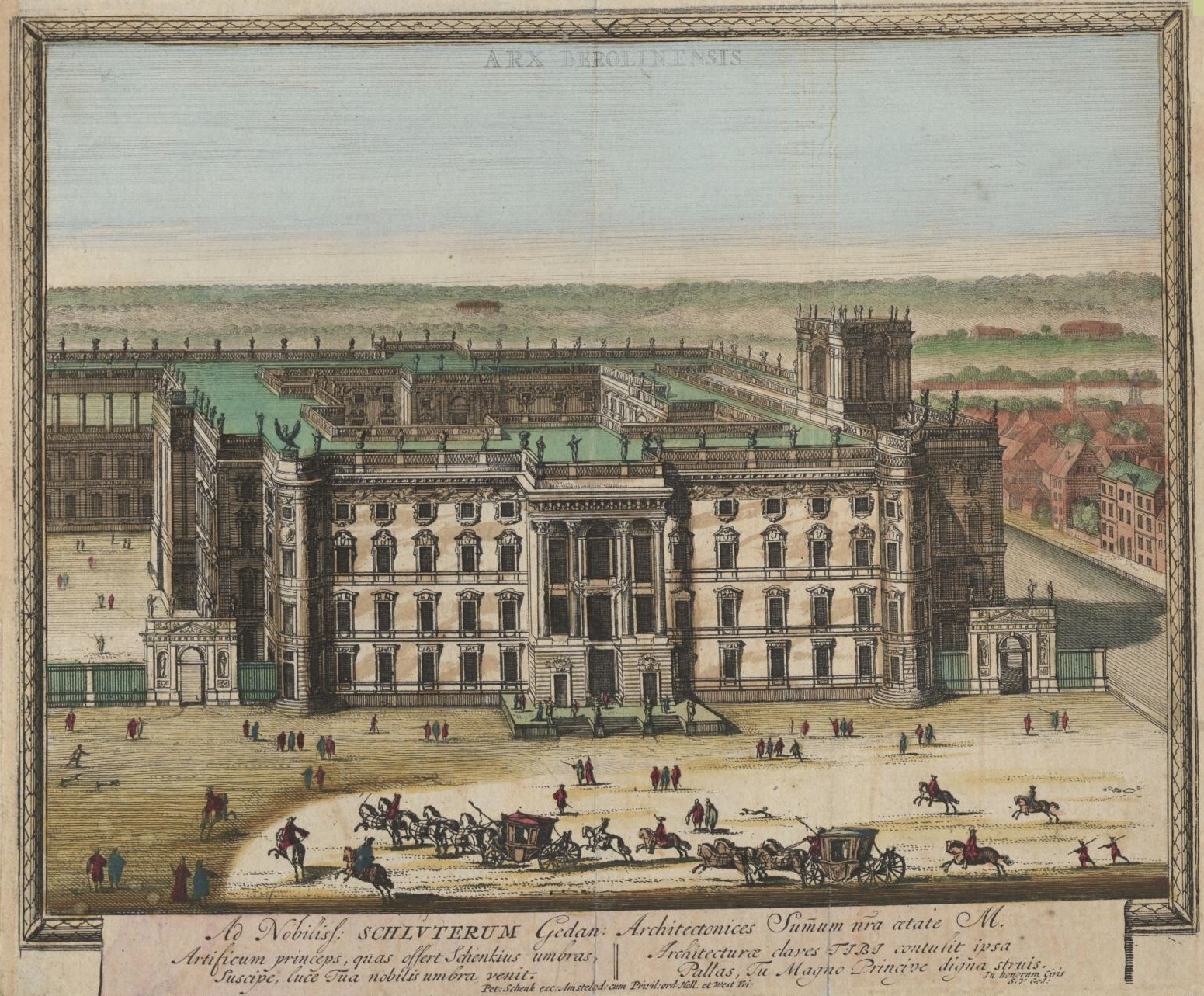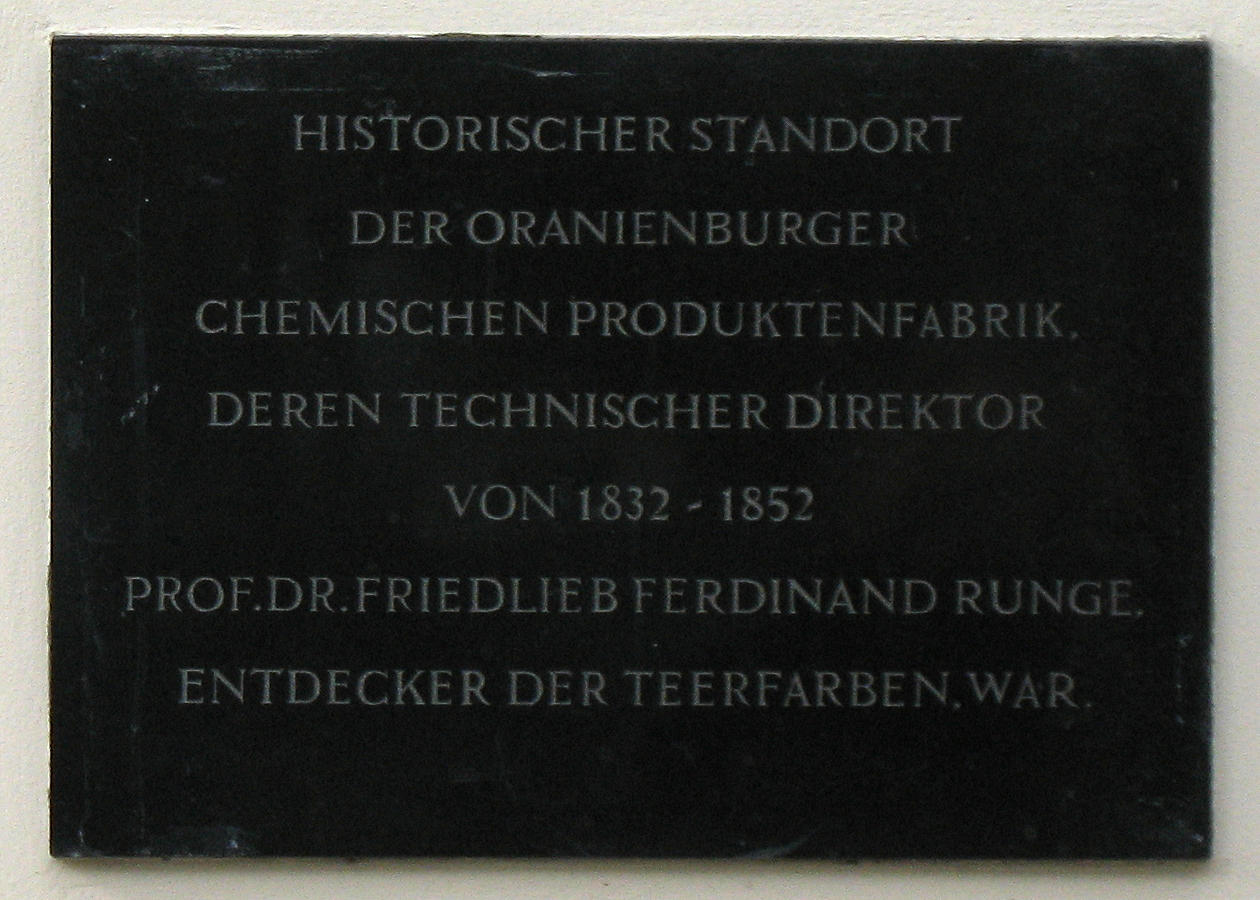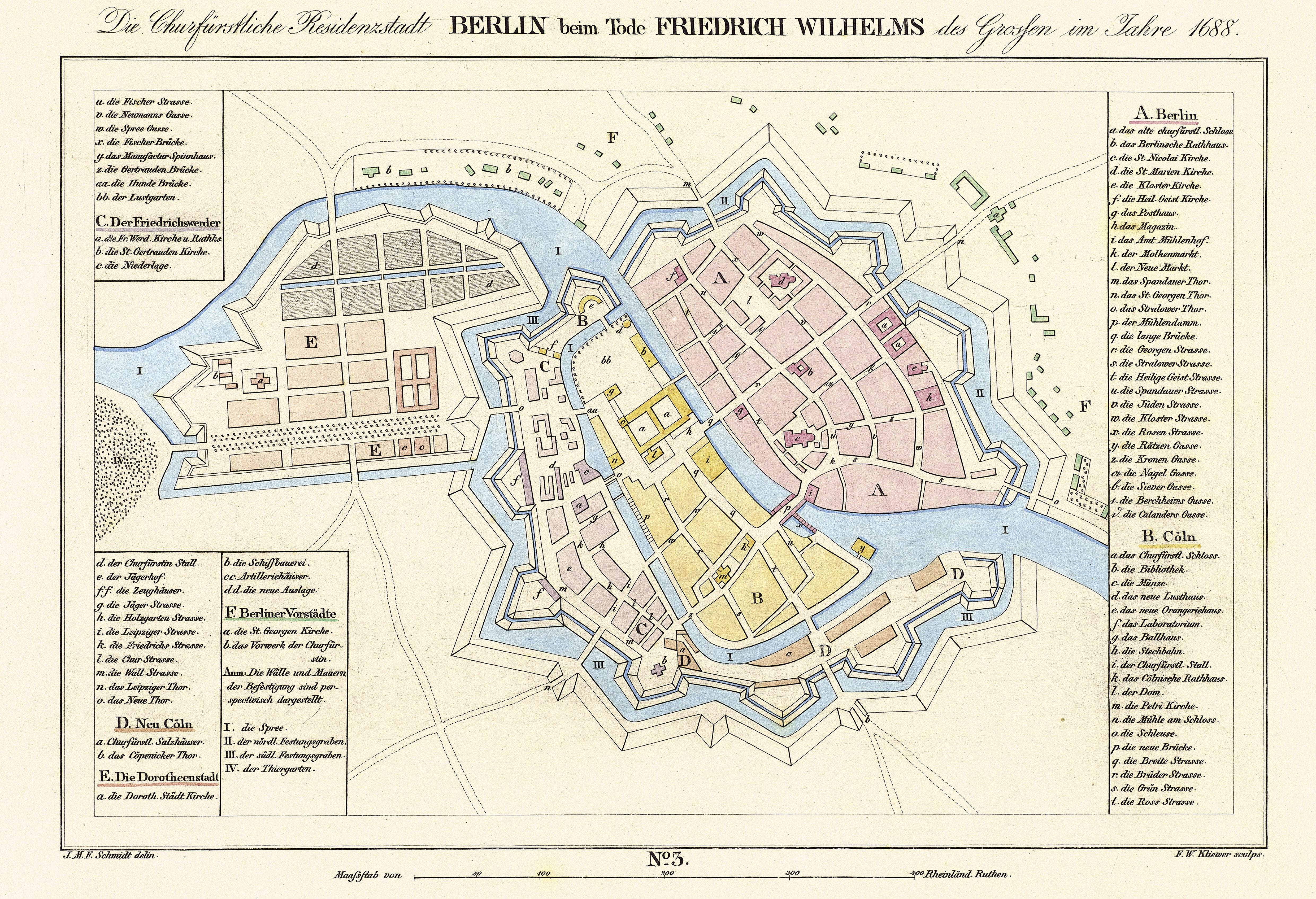|
Jagdschloss Grunewald
The Jagdschloss Grunewald, a hunting lodge, is the oldest preserved castle of Berlin, Germany. It is on the south waterfront of the Grunewaldsee and is part of the locality Dahlem (Berlin), Dahlem in the borough Steglitz-Zehlendorf. The Jagdschloss was built in 1542/1543. Its owner was Joachim II Hector, Elector of Brandenburg, Joachim II Hector the prince-elector of the Margraviate of Brandenburg. The building was created in the Renaissance style and got the name ''Zum grünen Wald'', "to the green forest", and gave the whole Grunewald (forest), Grunewald its name. Around 1800 the château got the name Grunewald too. During reconstructions between 1705 and 1708 by Frederick I of Prussia, Frederick I, the first king of Kingdom of Prussia, Prussia, it got its Baroque design by master builder Martin Grünberg. The Jagdschloss has been administered by the Prussian Palaces and Gardens Foundation Berlin-Brandenburg since 1932 and is used as a museum. It contains paintings by Lucas C ... [...More Info...] [...Related Items...] OR: [Wikipedia] [Google] [Baidu] |
Prussian Palaces And Gardens Foundation Berlin-Brandenburg
The Prussian Palaces and Gardens Foundation Berlin-Brandenburg (german: Stiftung Preußische Schlösser und Gärten Berlin-Brandenburg; SPSG) was founded by a treaty of 23 August 1994 between the German federal states of Berlin and Brandenburg as a public foundation following German reunification. The treaty came into force on 1 January 1995. The foundation is separate from the considerably larger Prussian Cultural Heritage Foundation (''Stiftung Preußischer Kulturbesitz''). History The SPSG is an amalgamation of the Potsdam-Sanssouci State Palaces and Gardens (''Staatlichen Schlösser und Gärten Potsdam-Sanssouci'') in the former East Germany and the State Palaces and Gardens Administration (''Verwaltung der Staatlichen Schlösser und Gärten'') in West Berlin that had been formed following the division of Germany. These institutions were formed from the Prussian State Palaces and Gardens Administration that had been founded on 1 April 1927 as a result of the apportionment o ... [...More Info...] [...Related Items...] OR: [Wikipedia] [Google] [Baidu] |
Grunewald (locality)
Grunewald () is a locality (''Ortsteil'') within the Berlin borough (''Bezirk'') of Charlottenburg-Wilmersdorf. Famous for the homonymous forest, until 2001 administrative reform it was part of the former district of Wilmersdorf. Next to Lichterfelde West, Dahlem and Westend, it is part of the affluent Berlin "Villenbogen", a row of 19th century suburbs completely made up of mansions. Geography The locality is situated in the western side of the city and is separated from Spandau by the river Havel. It borders with the localities of Westend, Halensee, Schmargendorf, Wilhelmstadt, Gatow (both in Spandau district), Nikolassee, Zehlendorf and Dahlem (all three in Steglitz-Zehlendorf district). The Grunewald forest is 10 km away from Berlin-Mitte (Germany's capital). History Etymology The name derives from the Grunewald hunting lodge of 1543, the oldest preserved castle in Berlin, which is, however, officially located within the adjacent Dahlem locality. It was erected i ... [...More Info...] [...Related Items...] OR: [Wikipedia] [Google] [Baidu] |
Berlin Palace
The Berlin Palace (german: Berliner Schloss), formally the Royal Palace (german: Königliches Schloss), on the Museum Island in the Mitte area of Berlin, was the main residence of the House of Hohenzollern from 1443 to 1918. Expanded by order of King Frederick I of Prussia according to plans by Andreas Schlüter from 1689 to 1713, it was thereafter considered a major work of Prussian Baroque architecture. The former royal palace was one of Berlin’s largest buildings and shaped the cityscape with its dome. Used for various government functions after the fall of the monarchy in 1918, it was damaged during the Allied bombing in World War II, and was demolished by the East German authorities in 1950. In the 1970s, it became the location of the modernist East German Palace of the Republic (the central government building of East Germany). After German reunification and several years of debate and discussion, particularly regarding the fraught historical legacy of both building ... [...More Info...] [...Related Items...] OR: [Wikipedia] [Google] [Baidu] |
Joachimsthal, Brandenburg
is a small town in the district of Barnim, in Brandenburg, Germany. It is situated within the Schorfheide-Chorin Biosphere Reserve on the isthmus between the lakes Grimnitzsee in the north and Werbellinsee in the south, about northwest of the district's capital Eberswalde and northeast of the Berlin city centre. The municipality is the administrative seat of the ''Amt'' ("collective municipality") Amt Joachimsthal. History Joachimsthal was founded in 1601 by Elector Joachim III Frederick of Brandenburg at the foot of medieval Grimnitz Castle and received town privileges in 1604. The Elector had a glass foundry erected and in 1607 established a boarding school, the Joachimsthalsches Gymnasium, that was relocated to Berlin after its devastation in 1636 during the Thirty Years' War. After a blaze in 1814, the church and several houses were rebuilt according to plans by Karl Friedrich Schinkel. King Frederick William IV of Prussia had the Hubertusstock hunting lodge erected on ... [...More Info...] [...Related Items...] OR: [Wikipedia] [Google] [Baidu] |
Potsdam
Potsdam () is the capital and, with around 183,000 inhabitants, largest city of the German state of Brandenburg. It is part of the Berlin/Brandenburg Metropolitan Region. Potsdam sits on the River Havel, a tributary of the Elbe, downstream of Berlin, and lies embedded in a hilly morainic landscape dotted with many lakes, around 20 of which are located within Potsdam's city limits. It lies some southwest of Berlin's city centre. The name of the city and of many of its boroughs are of Slavic origin. Potsdam was a residence of the Prussian kings and the German Kaiser until 1918. Its planning embodied ideas of the Age of Enlightenment: through a careful balance of architecture and landscape, Potsdam was intended as "a picturesque, pastoral dream" which would remind its residents of their relationship with nature and reason. The city, which is over 1000 years old, is widely known for its palaces, its lakes, and its overall historical and cultural significance. Landmarks include ... [...More Info...] [...Related Items...] OR: [Wikipedia] [Google] [Baidu] |
Köpenick
Köpenick () is a historic town and locality (''Ortsteil'') in Berlin, situated at the confluence of the rivers Dahme and Spree in the south-east of the German capital. It was formerly known as Copanic and then Cöpenick, only officially adopting the current spelling in 1931. It is also known for the famous imposter '' Hauptmann von Köpenick''. Prior to its incorporation into Berlin in 1920, Köpenick had been an independent town. It then became a borough of Berlin, and with an area of , Berlin's largest. As a result of Berlin's 2001 administrative reform, the borough of Köpenick was merged with that of Treptow to create the current borough of Treptow-Köpenick. Köpenick is home to the Bundesliga football club 1. FC Union Berlin, who play at the Stadion An der Alten Försterei. Mellowpark, the largest outdoor skatepark in Europe, is located in the town. Geography Overview A large percentage of Köpenick's surface area is made up of pine forests and expanses of water like ... [...More Info...] [...Related Items...] OR: [Wikipedia] [Google] [Baidu] |
Oranienburg
Oranienburg () is a town in Brandenburg, Germany. It is the capital of the district of Oberhavel. Geography Oranienburg is a town located on the banks of the Havel river, 35 km north of the centre of Berlin. Division of the town Oranienburg consists of nine districts: * Friedrichsthal * Germendorf * Lehnitz * Malz * Oranienburg * Sachsenhausen * Schmachtenhagen * Wensickendorf * Zehlendorf History Originally named Bötzow, the town of Oranienburg dates from the 12th century and was first mentioned in 1216. Margrave Albert the Bear (ruled 1157–1170) allegedly ordered the construction of a castle on the banks of the Havel. Around the castle stood a settlement of traders and craftsmen. In 1646, Friedrich Wilhelm I of Brandenburg married Louise Henriette of Orange-Nassau (German: ''Oranien-Nassau''). She was so attracted by the town of Bötzow that her husband presented the entire region to her. The princess ordered the construction of a new castle in the Dutch style and ... [...More Info...] [...Related Items...] OR: [Wikipedia] [Google] [Baidu] |
Timber Framing
Timber framing (german: Holzfachwerk) and "post-and-beam" construction are traditional methods of building with heavy timbers, creating structures using squared-off and carefully fitted and joined timbers with joints secured by large wooden pegs. If the structural frame of load-bearing timber is left exposed on the exterior of the building it may be referred to as half-timbered, and in many cases the infill between timbers will be used for decorative effect. The country most known for this kind of architecture is Germany, where timber-framed houses are spread all over the country. The method comes from working directly from logs and trees rather than pre-cut dimensional lumber. Hewing this with broadaxes, adzes, and draw knives and using hand-powered braces and augers (brace and bit) and other woodworking tools, artisans or framers could gradually assemble a building. Since this building method has been used for thousands of years in many parts of the world, many styles ... [...More Info...] [...Related Items...] OR: [Wikipedia] [Google] [Baidu] |
Cölln
Cölln () was the twin city of Old Berlin (Altberlin) from the 13th century to the 18th century. Cölln was located on the Fisher Island section of Spree Island, opposite Altberlin on the western bank of the River Spree, until the cities were merged by Frederick I of Prussia to form Berlin in 1710. Today, the former site of Cölln is the historic core of the modern Mitte locality of the Berlin-Mitte borough in central Berlin. History Cölln is first mentioned in a 1237 deed, denoting a priest Symeon of Cölln's (Symeon de Colonia) Saint Peter's Church as a witness. This date is commonly regarded as the origin of Berlin, though Altberlin on the eastern bank of the Spree river was not mentioned before 1244 and parts of modern Greater Berlin, such as Spandau and Köpenick, are even older. Cölln and Altberlin were separated only by the river Spree, linked by the ''Mühlendamm'' causeway, hence there was a close connection right from the start. Since the trade route from Magdeb ... [...More Info...] [...Related Items...] OR: [Wikipedia] [Google] [Baidu] |
Alt-Berlin
Alt-Berlin ("Old Berlin"), also spelled ''Altberlin'', is a neighborhood (''Stadtviertel''), situated in the Berliner locality (''Ortsteil'') of Mitte, part of the homonymous borough. In the 13th century it was the sister town of the old Cölln, located on the northern Spree Island in the Margraviate of Brandenburg. It counts in its territory the zone of Nikolaiviertel. History First mentioned in 1244, 7 years after Cölln, it represents the original core of the modern Berlin. The first stone fortification was built, to defend both cities, in 1250 and in 1251 it gained city rights. In 1280 Berlin, gained the right to mint currency. In that period it appeared on a coat of arms for the first time, close to the symbol of the imperial eagle, two stylized bears, antecedents of the bear currently serving as the symbol of the city. On 20 March 1307 the town was united with Cölln (maintaining its name, Berlin) forming a trading union on political and security matters, and participa ... [...More Info...] [...Related Items...] OR: [Wikipedia] [Google] [Baidu] |







